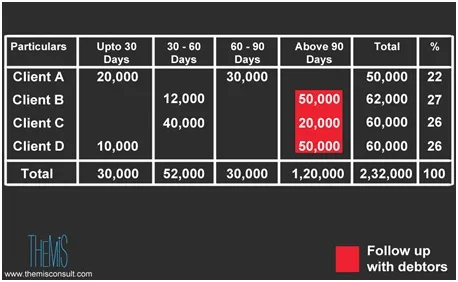Revenue is vanity, cash flow is sanity
Startups that focus on cash flows with messianic zeal are more likely to survive and grow faster than companies focused on their topline only.
Here are the’ ‘Big Five’ in managing cash flows:

1) Focus on cash flow as well as your P&L:
Revenue is vanity, cash flow is sanity. Making sure your company has enough fuel to keep evolving, growing and moving forward is very important.
Profit & loss statement is a statement which shows how much profit a company has earned or lost in a fiscal year. Cash flow statements show how much cash has been used by your business and how much cash is available for future use.
When you are starting a new business it is critical to make sure your cash flow cycles are good as that could often be the difference between your business growing or shutting down.
2) Track, Track and Track:
It is important that you track your cash flow position on a regular basis. You must know the amount of money you have in the bank, what your expenses are likely to be and who owes you money. It is imperative for business owners to be in touch with their clients and strike a balance between creating a long term relationship and ensuring receipt of regular payments for services rendered.
Conversely it is also important to lengthen your own credit period with your creditors so you have space to breathe.
Additionally, using graphs and pictorial representations of your cash flows will help give you a clearer picture of where your company stands.
Here is an example of a Debtors Ageing analysis:

An analysis of this nature helped our clients realize that his company needed to focus on collecting payments that were outstanding for a long period of time.
3) Calculate your burn rate
Your burn rate is the rate at which your business loses cash over a period of time. This includes any money you might have received from investors. You do not need a financial analyst to calculate and forecast your monthly cash inflow and outflow.
Here is an example:
The details for Company A are as given below:
Burn rate can be calculated by subtracting your projected revenue from your projected expenses. To understand how long your business will be able to sustain itself without an increase in revenue or infusion of funds, divide your funds available by your burn rate.
Understanding your burn rate is the key to making smart and strategic decisions.
4) Focus on high pay-off activities
Focusing on tasks that make the biggest difference to your business or yield the highest returns is key to finding success. It is very easy for a young company to lose focus on what is really important to their business. Focus on activities that make the biggest difference to the core competency of your business. For example, many times collecting from existing clients is more important than signing on new ones.
5) Raise funds early
Today is a gift and that’s why it is called ‘the present’. Raise funds when you don’t need them. This leaves you in a stronger position when negotiating with investors.
Raising funds is a long drawn and tedious process. By the time you need to start utilizing the money, it may already be too late for your business.

About the authorNibhrant Shah is the CEO & Founder of Themis, a company that helps startups and SMEs through Accounting, Finance, Human Resources and Company Secretary services and thus enables them to focus on their core competencies.








![[Startup Bharat] How Malabar Angel Network is boosting North Kerala’s startup ecosystem](https://images.yourstory.com/cs/2/79900dd0d91311e8a16045a90309d734/MANBuilding1574227798889jpg)


